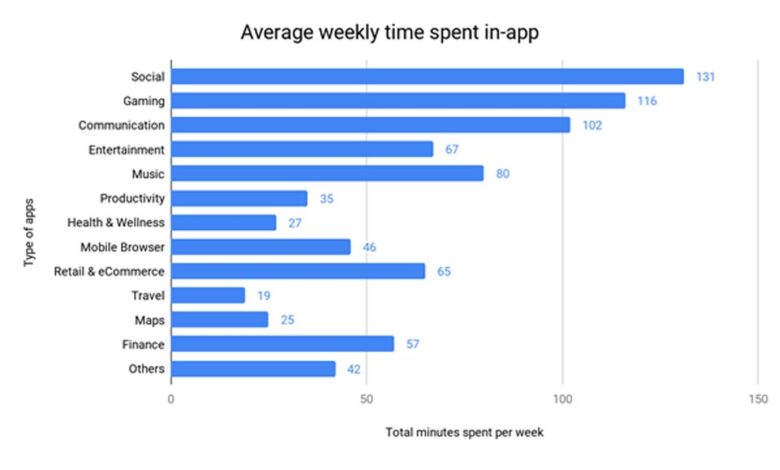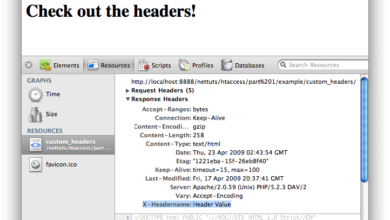
Retail Going Mobile Changing Crawl Limits
Retail going mobile changes crawl limits, impacting how search engines index and display online stores. Mobile shopping is booming, and this shift demands a new understanding of how search engine crawlers interact with websites. Mobile-first design affects everything from crawl frequency to budget allocation, requiring retailers to adapt their strategies. We’ll explore how these changes impact different aspects of mobile retail, from optimizing site architecture to managing crawl budgets.
This exploration will delve into the specific ways mobile-optimized websites are crawled, comparing them to traditional desktop sites. We’ll examine the unique challenges and opportunities presented by dynamic content, mobile-specific features, and varying network conditions. The goal is to provide practical strategies for retailers to optimize their mobile presence and ensure their sites are effectively crawled and indexed by search engines.
Impact of Mobile Retail on Crawling

Mobile shopping has exploded in recent years, reshaping consumer behavior and significantly impacting how retailers manage their online presence. This shift demands a re-evaluation of how search engines crawl and index retail websites, especially concerning mobile-first experiences. The rise of mobile commerce necessitates a more nuanced understanding of crawl budgets, frequency, and depth to ensure optimal visibility in search results.The increasing reliance on mobile devices for shopping has dramatically altered website traffic patterns.
Retailers are witnessing a substantial portion of their traffic originating from mobile devices, often surpassing desktop traffic. This mobile-centric shift influences the way search engines crawl and index websites, necessitating a careful adaptation of retail strategies to accommodate these changes.
Mobile-First Design and Search Engine Crawling
Retail websites that prioritize mobile experiences often exhibit different crawling patterns compared to those that aren’t mobile-friendly. Search engine crawlers are increasingly focusing on mobile versions of websites, especially when determining rankings. Mobile-first design often involves responsive web design, which adapts the layout and content of a website to different screen sizes. This means that the mobile version of a website can have a completely different structure and content than the desktop version.
For example, a retailer’s mobile site might prioritize product images and concise descriptions, while the desktop site might have detailed product specifications and reviews. This variation directly affects how search engines crawl and index the site, impacting how the content is understood and categorized.
Mobile-Friendly vs. Non-Mobile-Friendly Retail Sites
Mobile-friendly retail websites are optimized for mobile devices, allowing for faster loading times, improved user experience, and easier navigation. This often results in a more efficient crawl process for search engines, as the mobile-friendly version of the site is more easily parsed and indexed. Conversely, non-mobile-friendly sites can experience significant crawl budget limitations due to slow loading times, complex layouts, and potentially outdated code.
Search engines might prioritize crawling the mobile version, and allocate a smaller crawl budget to the non-mobile version, which results in less frequent updates of the non-mobile site content in search results. This can lead to a slower indexing rate, potentially hindering the site’s visibility in search results.
Mobile-Specific Features and Crawling
Mobile-specific features like dedicated mobile apps and mobile-optimized websites play a crucial role in how search engines crawl retail sites. Dedicated mobile apps, often optimized for speed and efficiency, can significantly improve user experience. Search engines may allocate a larger crawl budget to these mobile apps, given their positive user experience. Mobile-optimized websites are crawled and indexed based on their mobile-first design principles.
The content and structure are adapted for mobile devices, and search engines prioritize these adaptations when indexing.
Comparison of Crawling Behaviors
| Site Type | Crawl Frequency | Crawl Depth | Crawl Budget |
|---|---|---|---|
| Mobile-First Retail Website | High (frequent updates based on mobile site structure) | Deep (accessible content, efficient navigation) | High (optimized for mobile, fast loading) |
| Traditional Retail Website (non-mobile-friendly) | Low (search engine prioritizing mobile site) | Shallow (complex layouts, slower loading) | Low (potentially limited budget due to mobile-unfriendliness) |
Mobile-Specific Crawl Limits
Mobile retail experiences are increasingly crucial, driving the need for a deeper understanding of how search engine crawlers interact with mobile-optimized websites. This necessitates examining crawl limits specific to mobile, as they differ significantly from those applied to desktop versions. Understanding these nuances is vital for ensuring optimal visibility and discoverability of mobile-focused content.Mobile-specific crawl limits are influenced by various factors, including the website’s architecture, the complexity of its mobile interface, and the quality of the mobile experience itself.
These factors all contribute to how search engine crawlers perceive and process the site’s content, directly impacting the crawl budget allocated to the mobile version.
Retail moving to mobile platforms is dramatically altering crawl limits, forcing businesses to rethink their strategies. It’s crucial to avoid common Instagram mistakes when using the platform to reach a mobile-first audience, like instagram mistakes you avoid. Understanding these pitfalls will help retailers navigate the complexities of this new mobile-first retail landscape and maximize their reach.
Factors Influencing Mobile Crawl Limits
Mobile-specific crawl limits are not a static figure; they are dynamic and responsive to various site characteristics. Website responsiveness, the quality of mobile-specific content, and the complexity of mobile layouts all play critical roles. A site that prioritizes mobile optimization, offering a seamless user experience, will likely receive a higher crawl budget than one with a poor mobile interface or one that forces users to navigate a complex menu structure.
Impact of Mobile-Only Content on Crawling
Mobile-exclusive content, such as product listings tailored specifically for smaller screens, presents unique crawling challenges. Crawlers need to understand the specific structure and hierarchy of mobile-only product pages, including image and text placement. Inaccurate or inconsistent mobile-only content can lead to issues in indexing and ranking. The unique format and structure of this content requires the crawler to navigate and interpret the data in a manner that accounts for the differences in the mobile interface.
Comparison of Crawl Limits for Mobile and Desktop
Crawl limits for mobile and desktop versions of a retail site are not simply scaled down versions of each other. Mobile crawl limits are influenced by factors specific to the mobile experience, like the speed of loading pages and the device’s screen resolution. The desktop crawl budget may be larger, allowing for a deeper exploration of the site’s content structure.
For instance, a retailer with a complex, multi-layered desktop product catalog might have a higher crawl limit on the desktop version to properly index and catalog the complete range of products and associated information.
Potential Crawl Limit Issues in Mobile Retail Environments
Several issues can arise when crawlers encounter limitations within mobile retail environments. Slow loading times, especially on less-reliable mobile networks, can restrict the amount of content the crawler can process in a given time frame. Complex page layouts, which might not be as efficient for the mobile experience, could also hinder the crawler’s ability to navigate and process the page.
- Slow loading times can significantly impact crawl efficiency, potentially leading to the crawler not being able to process the entire site in the allocated time frame. This is especially true for mobile networks with varying speeds and bandwidth limitations. Network congestion and limited data access further exacerbate this issue.
- Complex layouts that are not optimized for mobile devices can lead to inefficient navigation and processing by the crawler. This could result in incomplete indexing of the site’s content.
- Mobile-specific content issues, such as inconsistent or missing data, can affect how the crawler interprets and indexes the content, potentially leading to errors in the search results.
Crawl Limit Scenarios Based on Device Types and Network Conditions
| Device Type | Network Speed | Potential Crawl Limit |
|---|---|---|
| Smartphone (4G) | Moderate | Medium |
| Smartphone (5G) | High | High |
| Tablet (Wi-Fi) | High | High |
| Smartphone (3G) | Low | Low |
| Smartphone (Cellular Data, Poor Signal) | Very Low | Very Low |
Strategies for Optimizing Mobile Crawlability

Mobile-first indexing has become the norm, making mobile site crawlability a critical factor for retail success. Ignoring mobile optimization can lead to poor search rankings and missed opportunities. Effective mobile strategies are essential for reaching customers on their preferred platform.Mobile optimization is not just about aesthetics; it’s about ensuring search engine crawlers can effectively index and understand the content.
This means prioritizing site architecture, speed, and content accessibility for optimal crawling performance. By adhering to best practices, retailers can significantly improve their mobile site’s visibility and attract a wider audience.
Retail moving to mobile is definitely changing crawl limits, and that’s impacting everything from SEO to how stores are discovered. It’s a big shift, but thankfully, there are easy ways to save Instagram videos to your device if you’re trying to keep up with trends, like using how to save Instagram videos to any device 5 simple ways.
This all means retailers need to adapt to these changing rules to stay competitive, and that’s a key part of navigating this evolving landscape.
Mobile Site Architecture for Enhanced Crawling
Mobile site architecture plays a crucial role in how search engines navigate and index content. A well-structured site allows crawlers to easily traverse pages, discover new content, and understand the relationships between different sections. Clear hierarchies, logical navigation menus, and well-defined URL structures contribute significantly to improved crawl efficiency. Using descriptive and consistent URLs, for example, `/products/clothing/shirts/t-shirts/men-s-t-shirts` instead of cryptic alphanumeric strings, is highly recommended.
Mobile Sitemap Optimization
Mobile sitemaps provide a structured guide for search engine crawlers to discover and prioritize pages. Creating a dedicated mobile sitemap, distinct from the desktop sitemap, is essential. This allows crawlers to focus on mobile content, ensuring optimal indexing. This sitemap should accurately reflect the site’s mobile structure and include all crucial pages, especially product listings, category pages, and frequently visited pages.
Ensuring the sitemap is updated regularly, reflecting recent changes and new additions to the mobile site, is vital for crawl efficiency.
Mobile Site Speed Optimization
Mobile site speed is directly linked to user experience and search engine rankings. Slow-loading pages frustrate users and negatively impact crawl efficiency. Search engines prioritize fast-loading websites, as they are more user-friendly and contribute to a better overall browsing experience. Implementing techniques such as optimizing images, using a content delivery network (CDN), and minimizing HTTP requests are essential steps for improving mobile site speed.
Mobile Optimization Techniques and Their Impact
| Technique | Expected Crawl Improvement | Potential Risks |
|---|---|---|
| Image Optimization (using appropriate formats, compressing images, lazy loading) | Improved page load time, increased crawl frequency, potentially higher ranking in search results. | Potential for loss of image quality if not done properly. Ensure proper alternative text is used for accessibility. |
| Content Delivery Network (CDN) implementation | Reduced latency, improved loading times, increased crawl frequency due to reduced load on servers. | Potential increased cost compared to traditional hosting. Requires careful configuration to avoid issues. |
| Minimizing HTTP Requests | Faster page load times, improved crawl speed. | May require significant code changes and testing to ensure proper functionality. |
| Caching mechanisms | Reduced server load, faster page load times, increased crawl frequency. | Potential for stale content if not implemented correctly. Requires regular review and maintenance. |
| Mobile-friendly design | Improved crawlability and user experience. | Potential for compatibility issues with older mobile devices. Testing on various devices is crucial. |
Mobile Retail and Dynamic Content
Mobile retail experiences are increasingly dynamic, leveraging technologies like AJAX and server-side rendering to provide personalized and engaging content. This dynamism, while enhancing the user experience, presents unique challenges for search engine crawlers. Understanding how dynamic content generation impacts crawling is crucial for optimizing mobile retail websites for visibility in search results.Dynamic content generation on mobile significantly affects crawling by altering the structure and content available to crawlers.
Crawlers often encounter pages that load content asynchronously, meaning they don’t immediately see the full page structure, which can hinder the indexing process. This necessitates strategies for crawlers to effectively interpret and index the dynamic content, thereby providing a comprehensive understanding of the mobile retail website.
Impact of Dynamic Content on Crawling
Crawlers typically encounter static HTML pages easily, understanding their structure and content. However, dynamic content, generated on the fly using technologies like AJAX, presents a different challenge. Crawlers need to effectively parse and interpret this dynamically generated content to understand the website’s full structure and available information. If crawlers don’t properly follow and interpret the dynamic content, they might not fully grasp the site’s offerings, potentially leading to incomplete or inaccurate indexing.
Retail moving to mobile platforms is significantly altering how search engines crawl websites. This shift impacts SEO strategies, particularly for niche industries like, say, artisanal cheese shops. Understanding how search engines adapt to this mobile-first world is key to crafting effective SEO strategies for niche industries. SEO strategies for niche industries require a nuanced approach that considers the specific needs and search behaviors of customers in these markets.
Ultimately, businesses need to optimize their mobile presence to maintain strong visibility in the changing retail landscape.
Techniques for Handling Dynamic Content
Mobile retail websites use various techniques to deliver dynamic content. AJAX is a prevalent method for loading content without requiring a full page reload. Server-side rendering (SSR) techniques, such as Node.js, generate HTML on the server, providing crawlers with fully rendered content immediately. Other methods involve using APIs for fetching data and incorporating it into the page structure.
Comparison of Crawling Approaches
Different approaches to crawling dynamic content on mobile sites vary in their effectiveness and efficiency. For instance, some crawlers are better equipped to handle AJAX requests, while others might struggle with complex interactions. Techniques like using JavaScript rendering or server-side rendering (SSR) enhance crawlability by providing crawlers with complete HTML content that mirrors the user experience. Contrastingly, sites that rely heavily on JavaScript-driven dynamic updates might present a challenge for crawlers unable to execute JavaScript effectively.
Examples of Mobile-First Retail Sites
Several mobile-first retail sites have successfully implemented dynamic content strategies. Companies that prioritize a seamless mobile experience and robust crawling techniques for their dynamic content usually see a positive impact on search engine rankings and overall visibility. Examining these sites can reveal best practices for handling dynamic content in a mobile retail environment.
Table of Dynamic Content Delivery Methods
| Method | Crawl Efficiency | Potential Challenges |
|---|---|---|
| AJAX | Moderate, dependent on implementation quality | Crawlers may miss dynamically loaded content if not properly handled. |
| Server-Side Rendering (SSR) | High, crawlers receive fully rendered HTML | Implementation complexity can be higher compared to other methods. |
| API-Driven Content | Variable, depends on API structure | Crawlers need to understand and correctly access the API to retrieve data. |
Mobile-Specific Crawl Budget Management
Mobile retail sites face unique challenges in managing crawl budgets due to the dynamic nature of mobile content and user behavior. Effective management ensures that search engines can efficiently index critical product information, promotions, and other dynamic content, optimizing visibility for mobile users. This is crucial for maintaining a strong online presence and driving mobile sales.Mobile crawl budget management is essential for ensuring that search engines can effectively index and update the vast amount of content on mobile retail sites.
This involves allocating resources strategically to prioritize important pages and content, while still ensuring comprehensive coverage of the entire site. Careful planning and ongoing monitoring are vital for maximizing the impact of mobile efforts.
Methods for Allocating Crawl Budget
Effective crawl budget allocation requires understanding the unique characteristics of mobile retail sites. Techniques that focus on dynamic content updates, mobile-specific URLs, and user behavior patterns are crucial. This includes identifying and prioritizing critical product pages, promotions, and other essential mobile content. Mobile-specific crawl budgets allow for targeted optimization, ensuring that important information is readily available to mobile users.
Tools and Techniques for Monitoring and Control, Retail going mobile changes crawl limits
Various tools and techniques enable real-time monitoring and control of mobile crawl budgets. Google Search Console provides valuable insights into crawl activity, allowing retailers to identify potential issues and adjust their strategy accordingly. Third-party tools offer advanced features for tracking crawl depth, frequency, and overall performance. These tools provide comprehensive data, helping to pinpoint specific areas needing attention and adjust strategies to optimize crawl efficiency.
Prioritizing Crucial Content for Mobile Crawls
Prioritizing crucial content is paramount in mobile crawl budget management. This involves focusing on pages that are most relevant to mobile users, including product detail pages, category pages, and frequently accessed promotional content. High-traffic pages and those with significant conversion potential should be prioritized. This strategic approach ensures that search engines effectively index the most valuable content for mobile users.
Adjusting Crawl Budget Based on Mobile User Behavior
Understanding mobile user behavior is essential for adapting crawl budget allocation. By analyzing data on popular product categories, frequently visited pages, and peak browsing hours, retailers can optimize crawl budget allocation to match user demand. Adjusting the crawl budget based on these patterns ensures that search engines have sufficient resources to index content that is most relevant to mobile users at any given time.
This dynamic approach allows for efficient resource allocation, maximizing the visibility of critical content.
Mobile-Specific Crawl Budget Allocation Strategies
- Prioritize high-value pages: Focus crawl budget on product detail pages, promotions, and category pages to ensure critical content is readily accessible to mobile users.
- Optimize mobile site architecture: Ensure a clear and logical site structure to allow search engines to easily navigate and index the mobile site. This enhances crawlability and improves site performance.
- Implement dynamic content rendering strategies: Optimize the delivery of dynamic content to ensure search engines can effectively access and index the most up-to-date information.
- Monitor crawl data regularly: Utilize tools like Google Search Console to track crawl activity and identify areas requiring attention. Regular monitoring allows for proactive adjustments to maintain crawl budget efficiency.
- Adapt crawl budget based on user behavior: Analyze mobile user behavior data to identify trends and adjust crawl budget allocation to ensure that resources are directed toward pages that are most relevant and frequently accessed by users.
Summary: Retail Going Mobile Changes Crawl Limits
In conclusion, the mobile revolution in retail fundamentally alters how search engines crawl websites. Understanding these changes is crucial for success in today’s digital marketplace. Optimizing for mobile crawlability is not just a technical necessity; it’s a key element in driving traffic and visibility for mobile-focused retailers. By adopting the strategies Artikeld in this discussion, retailers can ensure their mobile sites are not only user-friendly but also effectively indexed by search engines, maximizing their online presence.





